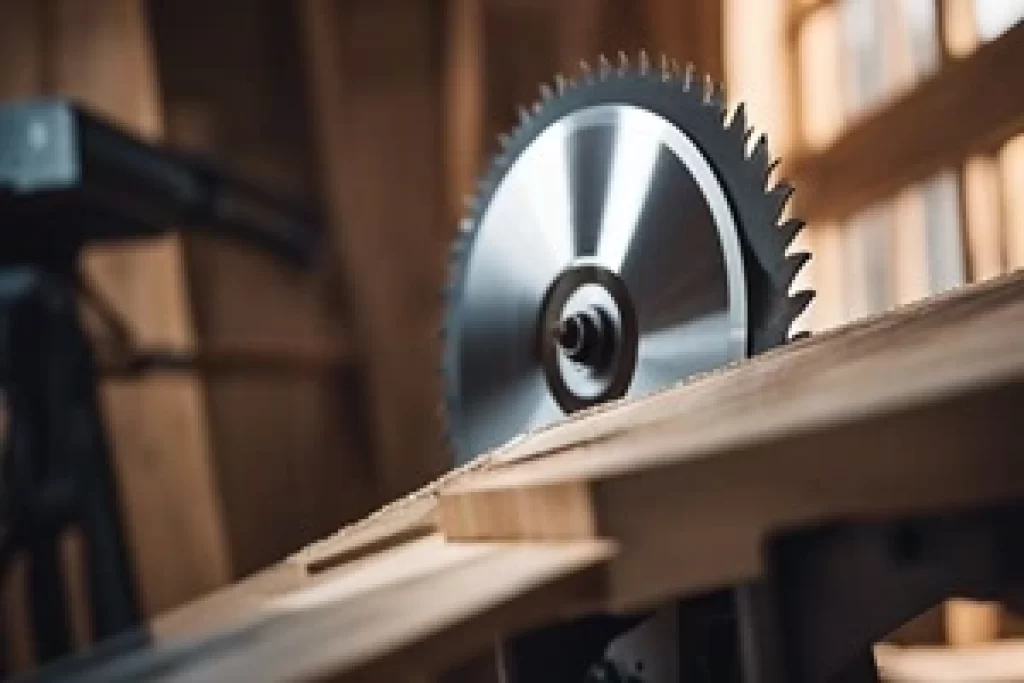What Circular Saw Blade for Trimming Doors
It’s crucial to use the correct circular saw blade when trimming doors to ensure a precise and efficient cut. Using the wrong blade not only compromises the quality of work but can also be dangerous. Understanding the importance of selecting the right blade for this specific task can make a significant difference in the outcome of your project. Let’s explore the key factors to consider when choosing a circular saw blade for trimming doors.
Key Takeaways:
- Choose the right blade type: When trimming doors, opt for a fine-toothed blade with carbide tips. These blades are designed to make precise and clean cuts on wood surfaces.
- Consider the blade size: Select a circular saw blade that is of the appropriate size for the type of trimming work you are doing. For door trimming, a 7 1/4-inch blade is commonly used for its versatility and efficiency.
- Focus on blade quality: Investing in a high-quality circular saw blade will not only ensure smooth and accurate cuts on doors but also extend the life of the blade. Look for blades made from durable materials that can withstand frequent use.

Understanding Circular Saw Blades
There’s a variety of circular saw blades available on the market, each designed for specific tasks. Understanding the differences between these blades can help you achieve the best results for your woodworking projects.
Types of Circular Saw Blades
The types of circular saw blades can be categorized based on their design and purpose. It’s crucial to select the right blade for the job to ensure clean cuts and optimal performance. Some common types of circular saw blades include:
- Rip Cut Blades: Designed for cutting along the wood grain.
- Crosscut Blades: Ideal for cutting across the wood grain.
- Combination Blades: Versatile blades that can handle both rip cuts and crosscuts.
- Finishing Blades: With fine teeth for smooth, clean cuts on delicate materials.
- Dado Blades: Specifically designed for making dado cuts for joinery.
Knowing the types of circular saw blades and their specific uses can help you select the right blade for your woodworking project.
Factors Influencing Blade Selection
Blades diameter, arbor size, kerf width, and tooth count are crucial factors that influence blade selection. Any mismatch between these factors and the material being cut can result in poor cuts and potential safety hazards.
- Diameter: Determines the depth of the cut.
- Arbor Size: Must match the saw’s arbor size for proper installation.
- Kerf Width: affects the width of the cut and material waste.
- Tooth Count: Determines the speed and smoothness of the cut.
Any discrepancies in these factors can affect the performance and safety of the cutting process. Pay close attention to these details when selecting a circular saw blade for your project.
Understanding the various types of circular saw blades and the factors that influence their selection is crucial for achieving the best results in your woodworking projects. By considering these details and matching the right blade to the task at hand, you can ensure clean cuts, efficient operation, and overall safety in your workshop.

Selecting the Perfect Blade for Trimming Doors
Blade Material
With the wide variety of materials available for circular saw blades, choosing the right one for trimming doors is crucial. Carbide-tipped blades are often preferred for their durability and ability to maintain sharpness, making them ideal for cutting through solid wood doors without losing their edge easily.
Tooth Count and Configuration
To achieve clean and precise cuts when trimming doors, the tooth count and configuration of the blade play a significant role. A blade with a higher tooth count will result in smoother cuts, while the configuration, such as alternate top bevel (ATB) teeth, is suitable for cutting across the wood grain on doors effortlessly.
Another aspect to consider is the gullet size between the teeth. A larger gullet allows for efficient chip removal, reducing heat build-up and preventing the blade from binding during use, ultimately enhancing the cutting performance and longevity of the blade.
Techniques for Trimming Doors
Proper Blade Installation
All trimming projects require the right blade, and when it comes to trimming doors, the right circular saw blade is crucial. Choose a fine-toothed blade with at least 40 teeth to ensure a smooth and clean cut. Make sure the blade is securely installed in the saw, following the manufacturer’s instructions carefully to prevent accidents.
Cutting Techniques for a Clean Finish
In terms of trimming doors, the cutting technique plays a significant role in achieving a clean finish. Start by marking the cut line accurately and secure the door properly to prevent movement during cutting. Make slow and steady cuts to avoid splintering the wood and ensure a smooth finish. Additionally, use a guide to keep the saw straight along the marked line for precision.
Cutting doors can be a daunting task, but with the right techniques and tools, you can achieve professional-looking results. By following proper blade installation guidelines and employing cutting techniques for a clean finish, you can trim doors with ease and confidence.
Safety Considerations
Personal Protective Equipment
Considerations for safety should always come first when operating a circular saw. Personal Protective Equipment (PPE) is vital to prevent injuries. Ensure you wear protective goggles to shield your eyes from flying debris, ear protection to reduce noise levels, gloves for better grip and hand protection, and a dust mask to avoid inhaling particles.
Operational Safety Tips
To operate a circular saw safely, follow these operational safety tips:
- Ensure the blade guard is always in place before starting the saw.
- Use a sharp blade to minimize kickback and ensure clean cuts.
- Secure the workpiece firmly before cutting to prevent slipping.
Knowing these operational safety tips will help reduce the risk of accidents during trimming or cutting tasks.
Another crucial safety tip is to disconnect the power before changing the blade or making any adjustments on the saw. This prevents accidental starts and potential injuries. Always read the manufacturer’s instructions and warnings before using a circular saw to ensure safe operation.
Maintenance of Your Circular Saw Blade
Cleaning and Storage
Many people overlook the importance of proper maintenance for their circular saw blade. To ensure the longevity and performance of your blade, it is necessary to regularly clean it after each use. Use a brush to remove any built-up sawdust, resin, or other debris from the blade. Additionally, store the blade in a dry area to prevent rust and corrosion.
When to Replace the Blade
On occasion, it may be necessary to replace your circular saw blade. Inspect the blade regularly for signs of wear and tear, such as dullness, chipping, or warping. If you notice burn marks or rough cuts during use, it may be time to replace the blade.
Replace your circular saw blade if you experience excessive vibration or kickback during operation. Continuing to use a dull or damaged blade can compromise safety and result in inaccurate cuts. Investing in a new blade will improve cutting efficiency and overall performance of your circular saw.
Final Words
On the whole, choosing the right circular saw blade for trimming doors is crucial for achieving clean and precise cuts. By selecting a blade specifically designed for cutting hollow core doors, you can ensure smooth and professional results. To unlock the secrets to the perfect cut, check out Find the Ultimate Blade for Hollow Core Doors for expert tips and recommendations. With the right blade and technique, you can easily trim doors to fit any space with confidence and ease.
FAQ
Q: What circular saw blade is best for trimming doors?
A: When trimming doors, it is recommended to use a fine-tooth finishing blade with at least 40 teeth. This type of blade produces clean and smooth cuts, perfect for achieving a professional finish on your door.
Q: Can I use any circular saw blade for trimming doors?
A: While you can technically use any circular saw blade for trimming doors, using a blade specifically designed for fine woodworking tasks will yield the best results. Blades with more teeth and a finer finish are ideal for this precise job.
Q: How do I choose the right circular saw blade for trimming doors?
A: When identifying a circular saw blade for trimming doors, consider the number of teeth on the blade – more teeth translate to a smoother cut. Opt for a blade with at least 40 teeth for clean and accurate cuts. Additionally, choose a blade with a thin kerf to reduce material waste and produce precise cuts.










